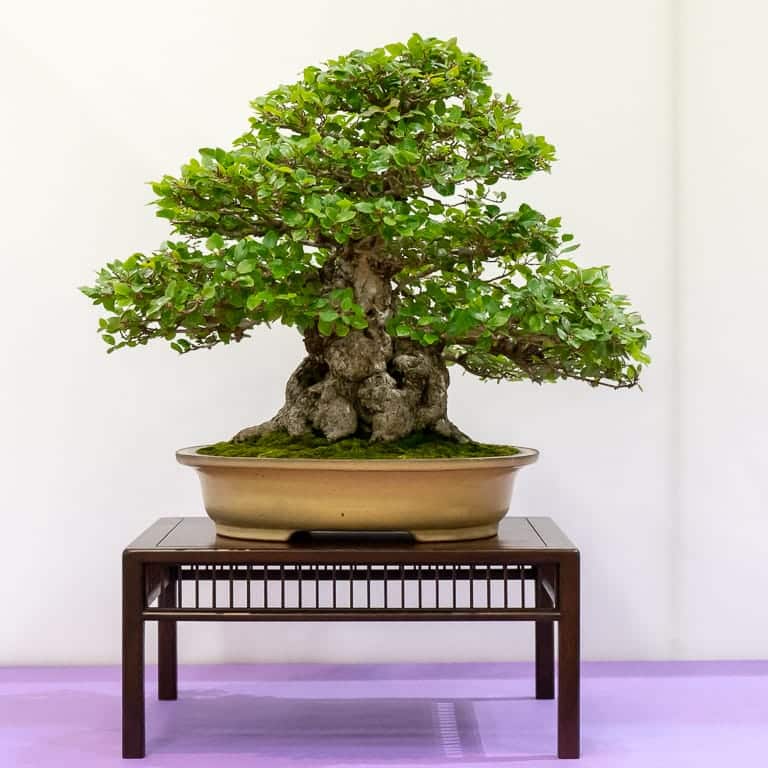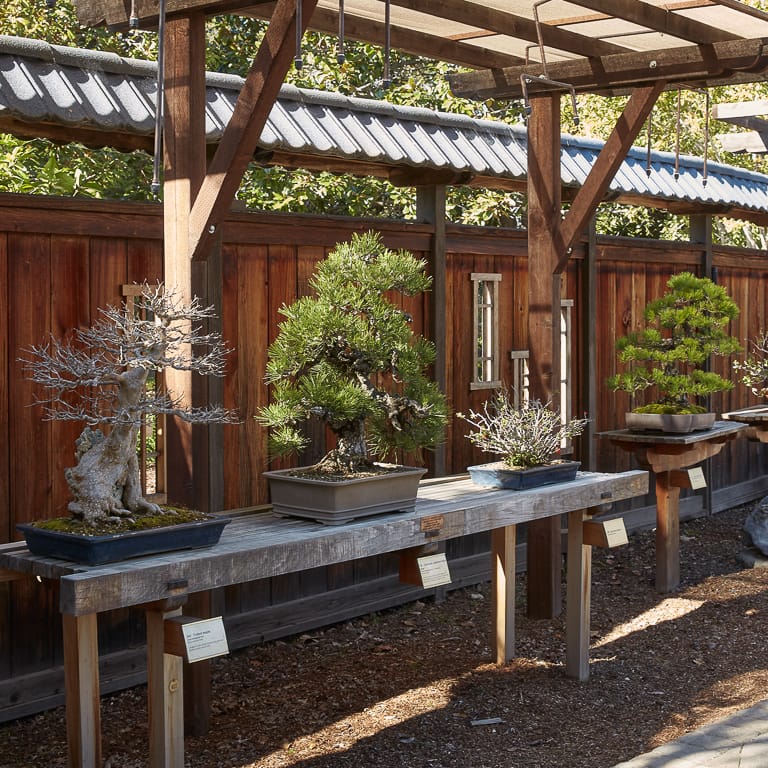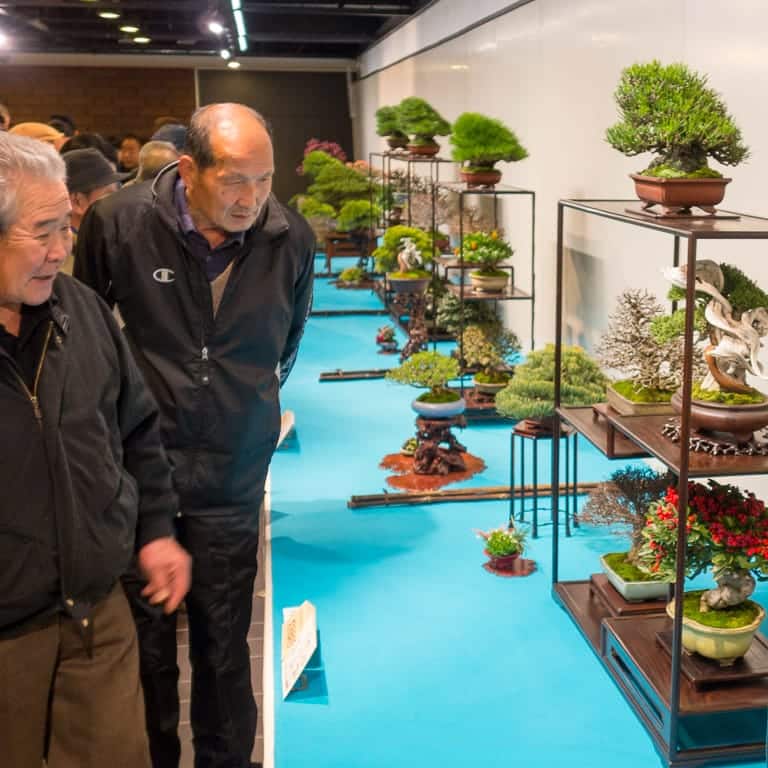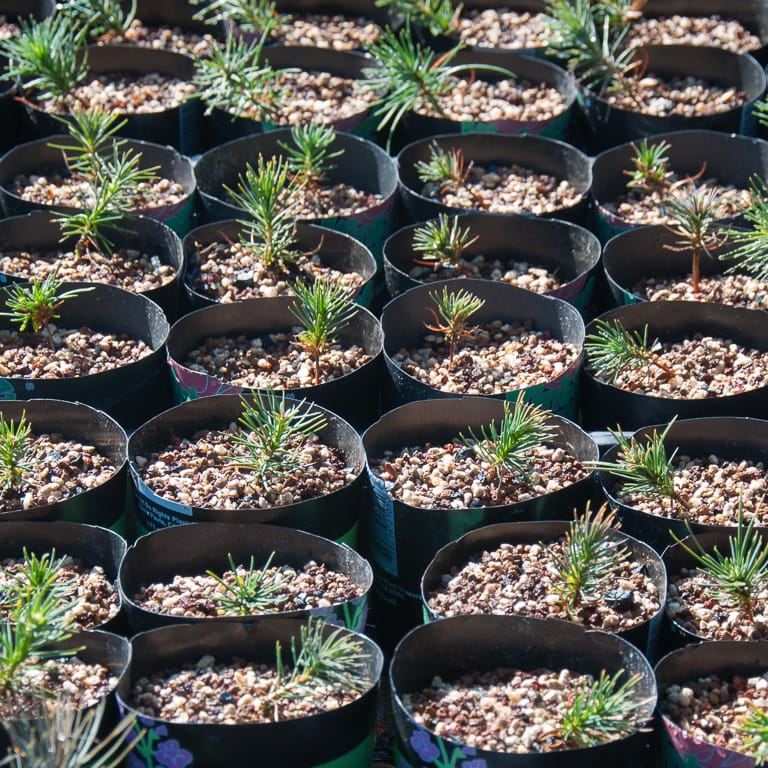This page is an expanded version of the resources listed in Chapter 6 of The Little Book of Bonsai.
Table of Contents
- Bonsai Clubs
- Print Publications
- Multi-day Classes (“Bonsai Intensives”)
- Public Bonsai Gardens
- Bonsai Exhibits
- Bonsai In Japan
- Bonsai Photo Books
- Finding Material for Bonsai
Bonsai Clubs
Bonsai clubs host educational meetings and/or workshops to help members improve their trees. Meetings feature lectures on timely bonsai topics or demonstrations of specific techniques. Below is a list of regional bonsai organizations. Searching for “bonsai clubs” in your area is the best way to identify local groups.
- Golden State Bonsai Federation: California
- Lone Star Bonsai Federation: Texas
- Mid-America Bonsai Alliance: Illinois, Indiana, Iowa, Kentucky, Michigan, Minnesota, Missouri, Ohio, Ontario, Canada, Wisconsin
- Mid-Atlantic Bonsai Societies: Connecticut, Massachusetts, New Jersey, New York, Pennsylvania
- Pacific Northwest Bonsai Clubs Association: Washington, Oregon, Idaho and Montana in the US and British Columbia in Canada
- Portland Bonsai Village: Oregon
- Potomac Bonsai Association: Washington, D.C., Central and Northern Virginia, and Maryland

Korean hornbeam displayed at the
Redwood Empire Bonsai Society’s annual exhibit
Print Publications
Subscribing to an online or print publication is a good way to learn new techniques or keep up with what’s happening in the bonsai world. Here are some titles to check out:
- Bonsai and Stone Appreciation Magazine covers bonsai and suiseki events around the world.
- Bonsai Focus is an international publication available in six languages featuring techniques presented by bonsai professionals.
- Bonsai: Journal of the American Bonsai Society, publishes in-depth articles aimed at helping bonsai enthusiasts improve their trees.
- Esprit Bonsai International is a French publication with an English language version featuring work from Europe and Asia.
- International Bonsai Magazine features articles from American and Japanese authors. Each issue focuses on a specific topic such as maple bonsai or miniature bonsai.
Japanese language magazines can be fun to browse for the photos. A good one to look out for is Kindai Bonsai.
Multi-day Classes (“Bonsai Intensives”)
Bonsai Intensives are a popular option for jump starting your skills. Typically three days long, intensives give participants an opportunity to work on their own trees or trees from their teacher’s collection. Here are some popular intensives in the U.S.
- Bonsai Boon: Courses taught by Boon Manakitivipart in Valley Springs, California
- Bonsai Mirai: Courses taught by Ryan Neil outside Portland, Oregon
- Bonsai Tonight: Courses taught by Jonas Dupuich in Alameda, California
- Crataegus Bonsai Courses taught by Michael Hagedorn near Portland, Oregon
- Eisei-en: Courses taught by Bjorn Bjorholm in Nashville, Tennessee
Public Bonsai Gardens
The best way to learn about making beautiful bonsai is by studying beautiful trees. The following gardens feature bonsai collections that are open to the general public.
- Bonsai and Penjing Collection at the Jardin Botanique de Montréal: Montréal, Canada
- Bonsai Collection at the Chicago Botanic Garden: Glencoe, Illinois
- Bonsai Collection at The Huntington: San Marino, California
- Bonsai Exhibit at the Smith Gilbert Gardens: Kennesaw, Georgia
- Bonsai Exhibition Garden, North Carolina Arboretum: Asheville, North Carolina
- Bonsai Garden at Lake Merritt, Lakeside Park: Oakland, California
- C. V. Starr Bonsai Museum, Brooklyn Botanic Garden: Brooklyn, New York
- Clark Bonsai Collection, Shinzen Friendship Garden at Woodland Park: Fresno, California
- Dr. Ron and Arlene Kessler Bonsai Walk, Morikami Museum and Japanese Gardens: Delray Beach, Florida
- Elandan Gardens: Bremerton, Washington
- Ellie M. Hill Bonsai Terrace, Portland Japanese Garden: Portland, Oregon
- James J. Smith Bonsai Gallery, Heathcote Botanical Gardens: Fort Pierce, Florida
- Larz Anderson Collection of Japanese Dwarf Trees, Arnold Arboretum of Harvard University: Boston, Massachusetts
- National Bonsai & Penjing Museum, US National Arboretum: Washington, DC
- Pacific Bonsai Museum: Federal Way, Washington
- Texas State Bonsai Exhibit: Austin, Texas

The Bonsai Garden at Lake Merritt
Bonsai Exhibits
Local and regional bonsai organizations often host annual bonsai shows. The following national exhibitions feature some of the best bonsai in the U.S.
- US National Bonsai Exhibition: Rochester, New York
- US National Shohin Bonsai Exhibition: Kannapolis, North Carolina
Bonsai in Japan
It’s easier than you think to see bonsai in Japan. Six nurseries and a bonsai museum are open to the public in Saitama, Japan, about one hour by train from Tokyo.
The top two exhibitions in Japan are the Kokufu-ten and the Taikan-ten. Both are well-attended by international visitors.
- Kokufu-ten (National Exhibition): Tokyo Metropolitan Art Museum in Ueno Park, Tokyo, Japan. Held annually in February.
- Taikan-ten (Grand View Exhibition): Miyakomesse, Kyoto, Japan. Held annually in November.

Shohin displays at the Kokufu Bonsai Exhibition
Bonsai Photo Books
Perusing photos of trees is a great way to study bonsai style. Many exhibits around the world publish exhibit catalogs showing trees at their best. Two standouts are the catalogs from the national bonsai exhibits in the U.S. and in Japan.
- U.S. National Bonsai Exhibition Commemorative Album, by William N. Valavanis, features bonsai displayed at the U.S. National Bonsai Exhibition.
- The Nippon Bonsai Association publishes a catalog of the trees on display at their national exhibit. Although supply in the U.S. is limited, you can search for “Kokufu-ten bonsai book” to find local sellers (they are also available in the Bonsai Tonight store). Albums from other Japanese exhibits like the Taikan-ten or the Gafu-ten, or are also available.
- In Training, by Stephen Voss, was shot over the course of one year at the National Bonsai & Penjing Museum in Washington, DC. Unlike the above books, In Training focuses on detail shots that convey the experience of looking closely at beautiful trees.
Finding Material for Bonsai
You have several options for growing your bonsai collection:
- You can acquire trees that have already been styled as bonsai
- You can acquire nursery stock and train it as bonsai
- You can dig garden trees with good characteristics for bonsai (make sure to get permission first!)
- You can start trees from seed, cutting, or air-layer
The best sources for styled bonsai are retail bonsai nurseries or bonsai club auctions and sales. Searching online for local clubs is a good starting point for identifying local bonsai resources. And although most bonsai nurseries aren’t set up to ship trees, the largest nurseries regularly ship across the country.
Your next best bet for finding material to develop as bonsai is your local nursery or garden center. Although these stores may not have trees that have been trained as bonsai, they may have good material you can use to create your own bonsai. Look for trees growing in one- or five-gallon containers like junipers, maples, or any species you are interested in growing.
If you’d like to create your own bonsai from scratch, visit the Beginner’s Resource for information on propagating bonsai and building your skills to ensure your trees grow beautiful with age.

Pine seedlings
Subscribe to Bonsai Tonight
New Posts Delivered Every Tuesday and Friday